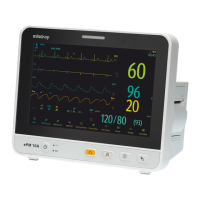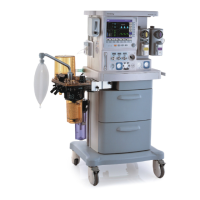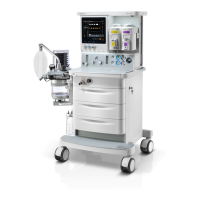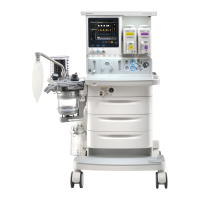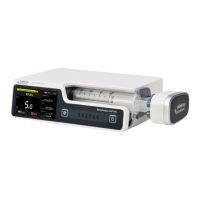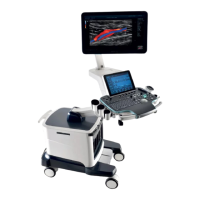14 - 1
14 Monitoring Temperature (Temp)
14.1 Temperature Introduction
You can continuously monitor the patient’s skin temperature and core temperature. Thermally sensitive resistors
(thermistors) are used. They are based on the principle that electrical resistance of the thermistor changes as
temperature changes. Thermistors measure the resistance change and use it to calculate the temperature.
You can simultaneously monitor up to two temperature sites and calculate the difference between two
measured sites.
Temperature monitoring is intended for adult, pediatric and neonatal patients.
14.2 Displaying the Temp Numerics Area
To display the Temp numerics area, follow this procedure:
1. Access Tile Layout in either of the following ways:
◆ Select the Screen Setup quick key → select the Tile Layout tab.
◆ Select the Main Menu quick key → from the Display column select Tile Layout.
2. Select a parameter numeric area or waveform area, and then from the popup list select Any Temp.
14.3 Temperature Display
The following figure shows the Temp numeric area for temperature monitoring. Your display may be configured
to look different.
14.4 Preparing for Temperature Monitoring
To prepare temperature monitoring, follow this procedure:
1. Select an appropriate probe for your patient according to patient category and measured site.
2. Plug the probe or temperature cable to the temperature connector. If you are using a disposable probe,
connect the probe to the temperature cable.
3. Follow the probe manufacturer’s instructions to connect the probe to the patient.
(1) Temperature site (2) Temperature unit (3) Alarm limits (4) Temperature value
(5) Temperature difference (
ΔT): Difference between two temperature sites. It displays only when ΔT is switched on.
(4)
(1)
(4)
(5)
(3)
(3)
(1)
(2)
(2)

